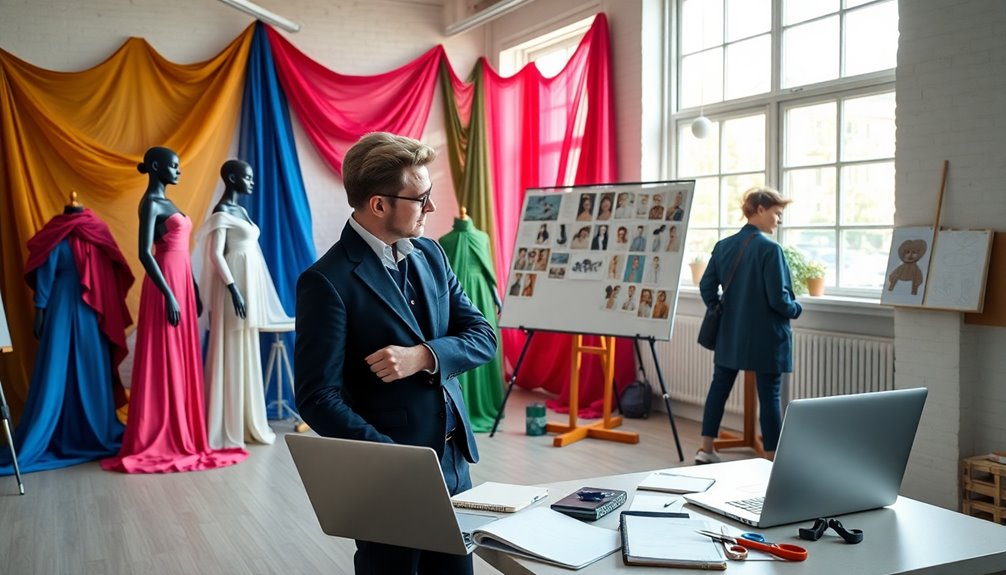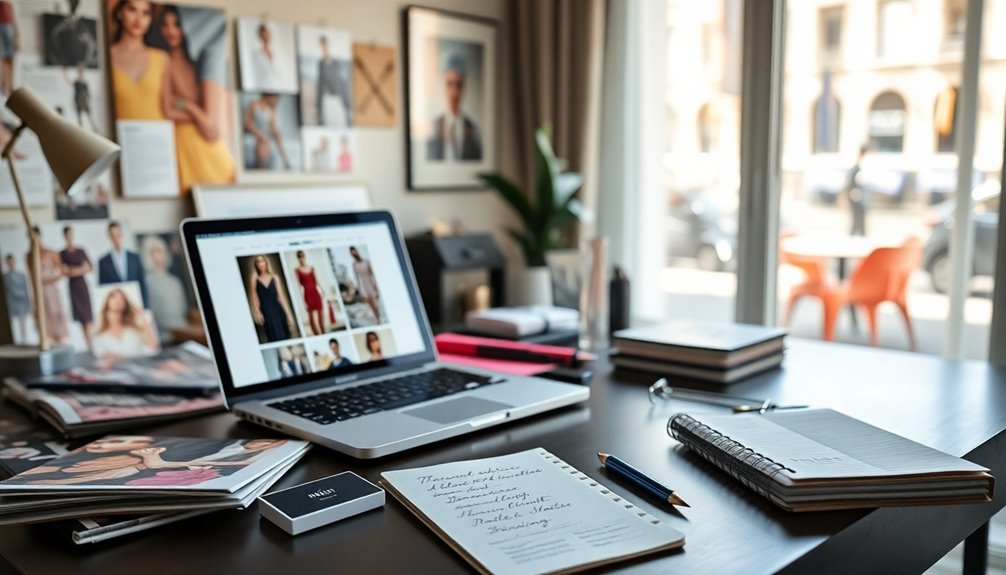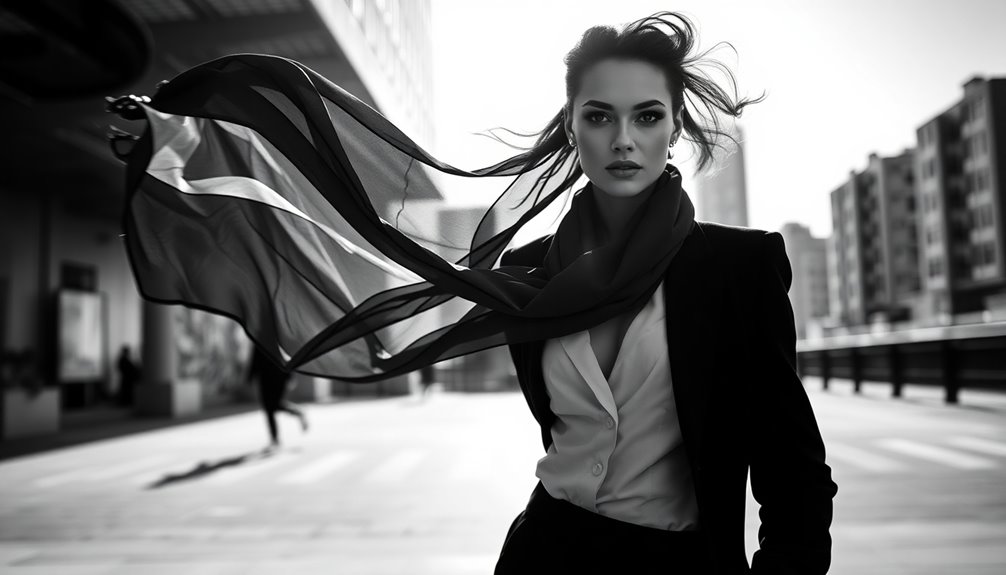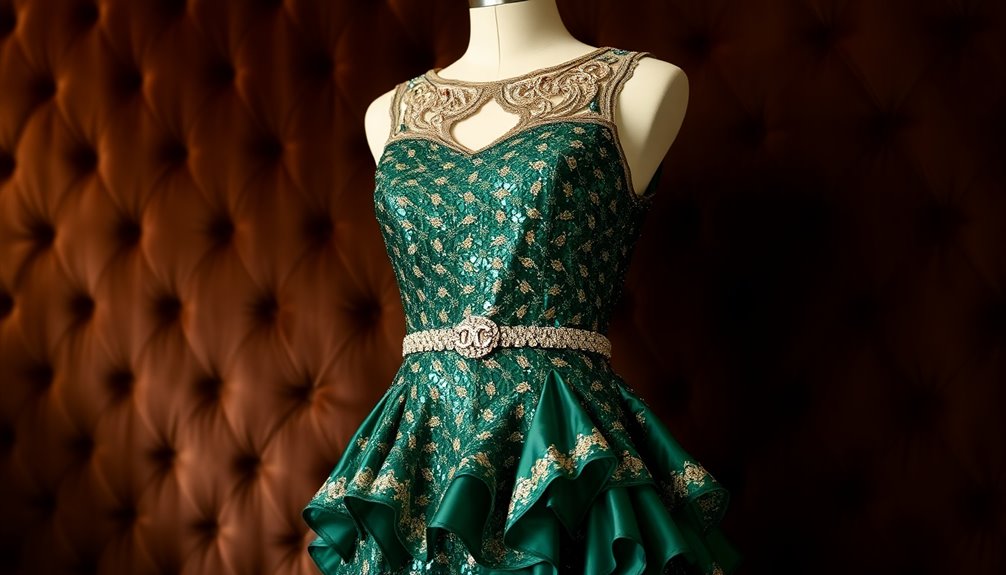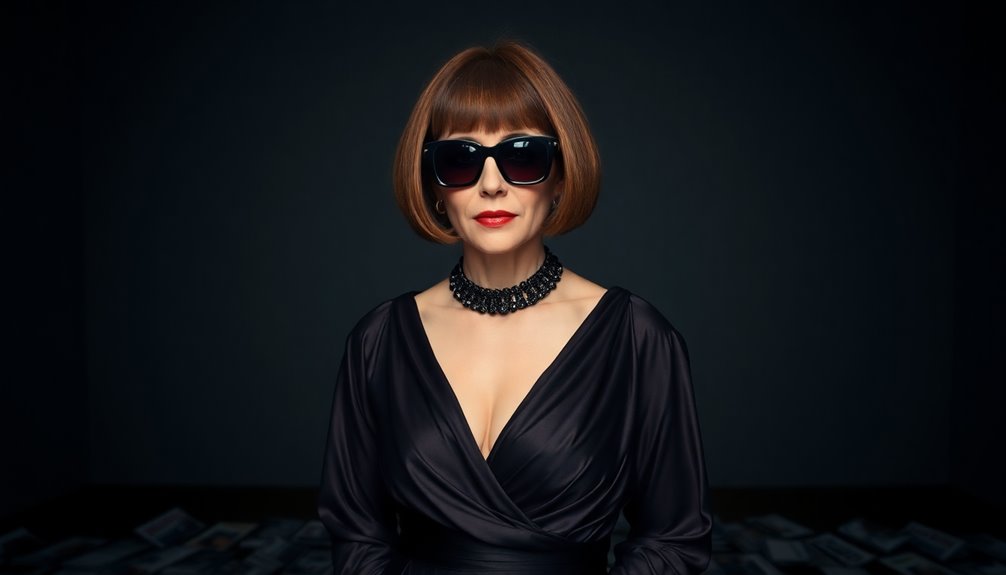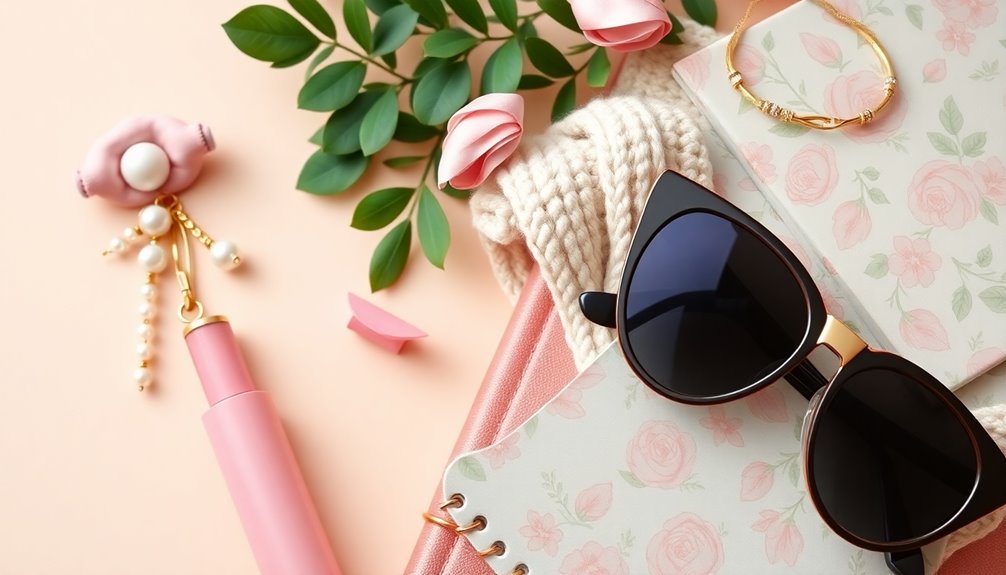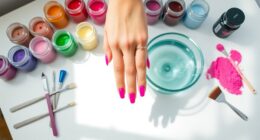As a Fashion Art Director, you're at the intersection of creativity and strategy. You oversee the visual elements of campaigns, ensuring they align with brand identity while staying true to current trends. You guide teams of stylists, photographers, and models, fostering collaboration and innovation. Your role includes managing budgets and supervising projects, always with an eye for detail and quality. By seamlessly blending artistic vision with market demands, you help shape brand perception and drive sales. Interested in how this dynamic role further influences fashion? There's so much more to explore in the evolving landscape of fashion direction.
Key Takeaways
- The Fashion Art Director shapes brand identity through creative visual campaigns, aligning imagery with brand values and market trends.
- They lead creative teams, providing direction while fostering collaboration and innovation in shoot concepts and visual strategies.
- Strong attention to detail ensures high-quality imagery that maintains consistency across all platforms, enhancing brand perception.
- Effective communication of the creative vision is essential for coordinating with stylists, photographers, and marketing teams to achieve cohesive results.
- A successful Fashion Art Director embraces inclusivity and diversity, adapting to industry shifts while maintaining a strong brand identity.
Overview of Responsibilities
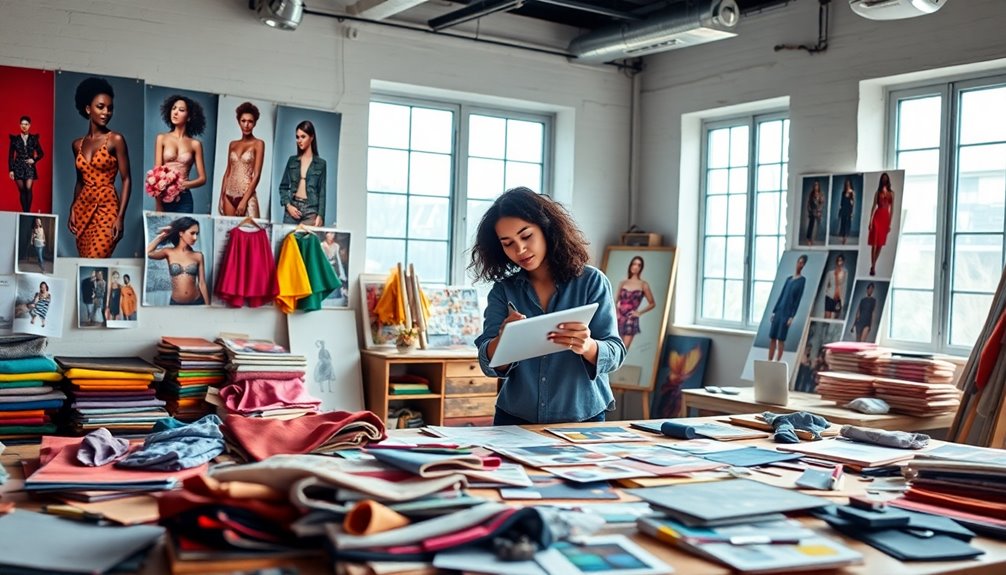
As a Fashion Art Director, your creativity is matched by the strategic vision required to elevate a brand's presence. You oversee the visual aspects of campaigns, ensuring that every image aligns with the brand's DNA. This means managing everything from product shots to magazine covers.
Collaboration is key; you work closely with stylists, photographers, models, and other professionals to bring your creative vision to life. You'll approve final concepts and designs, making sure they resonate with the audience.
Leading and managing creative teams is another crucial part of your role. You direct graphic designers, illustrators, and photographers, briefing them on project goals and expectations. Tracking progress and providing constructive feedback helps keep everyone aligned with the brand's vision. Attention to detail is essential in this process, as it allows you to evaluate and refine all visual elements for consistency and quality.
On the administrative side, you organize budgets and coordinate with marketing and editorial teams to ensure cohesive visual elements. Your calendar is filled with meetings, and you manage timelines to meet tight deadlines.
Staying updated with industry trends is essential; you research the latest fashion developments and assess public reactions to refine future strategies. By adapting to changes, including the shift to digital platforms, you ensure your brand remains relevant and innovative.
Creative Vision Development
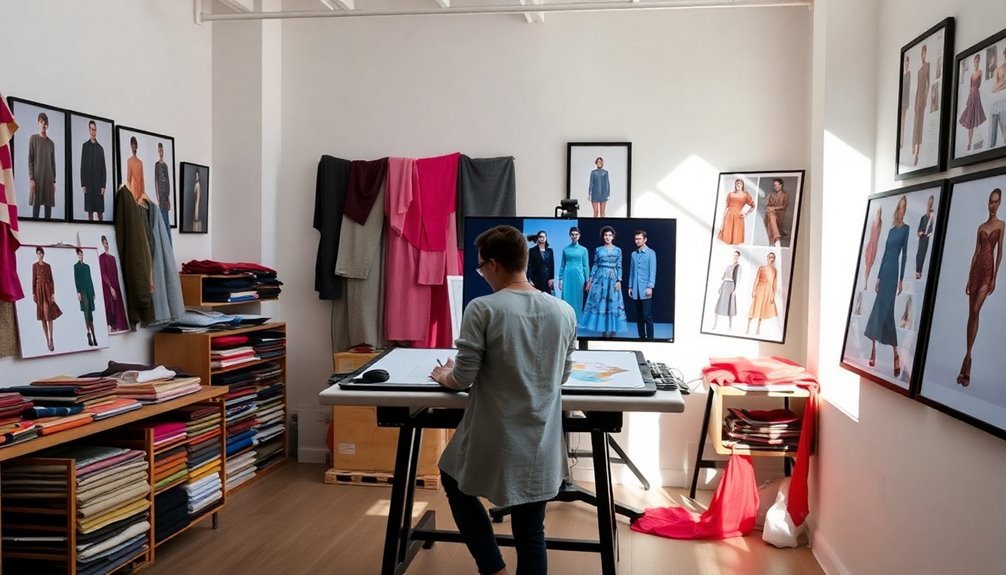
Creative vision development is the heart of a Fashion Art Director's role, where inspiration meets execution. You start by immersing yourself in the brand's vision and values, ensuring your creative output accurately conveys its message. By interpreting briefs and mood boards, you align all imagery with the brand's DNA, maintaining consistency across platforms.
From there, brainstorming innovative ideas for shoots and campaigns becomes your playground. You'll develop unique visual strategies that not only capture attention but also resonate with the target audience. Using mood boards, you contextualize these concepts and refine them until they meet your high creative standards.
Your visual communication skills play a crucial role in conveying ideas to your team. Every detail, from location to styling, must align with the brand's vision. You check for cohesion and ensure that the aesthetic, colors, and lighting all work together to communicate the brand's message effectively. Additionally, effective project management skills are essential for balancing the creative process with administrative tasks involved in executing the vision.
Staying ahead of trends is vital too. By keeping up with the latest in fashion, art, and culture, you integrate current trends into your visual content while ensuring it remains relevant and engaging for your audience.
Leadership in Team Management
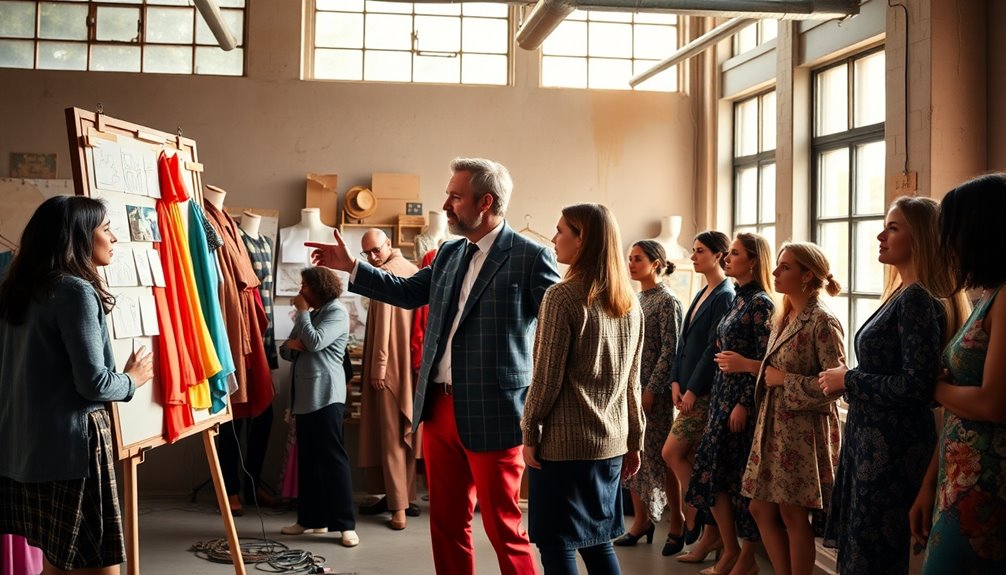
Successful team management is crucial for a Fashion Art Director, and you'll often find yourself inspiring and motivating your team to align with the brand's vision. By providing guidance, feedback, and mentorship, you foster a creative and collaborative environment. You'll empower team members to unleash their full potential, encouraging them to experiment and think innovatively.
Effective communication is key. You need to convey your creative vision clearly using sketches, mood boards, and presentations. Listening to your team's ideas and integrating them into the overall vision helps build consensus and strengthens the collective effort. Additionally, liaising with clients about project requirements ensures everyone's on the same page.
Your organizational and time management skills will be put to the test as you juggle multiple projects and deadlines. You'll keep everything on track, ensuring projects are completed on time and within budget. By utilizing project management techniques, you maintain a smooth and productive workflow. Furthermore, developing a strong portfolio will serve as a critical asset in showcasing your vision and attracting top talent to your team.
Moreover, your ability to problem-solve and adapt will serve you well. Navigating uncertainty, shifting priorities, and emerging trends requires agility and resilience, allowing for growth and innovation as challenges arise.
Your leadership will ultimately shape a successful and dynamic team.
Attention to Detail
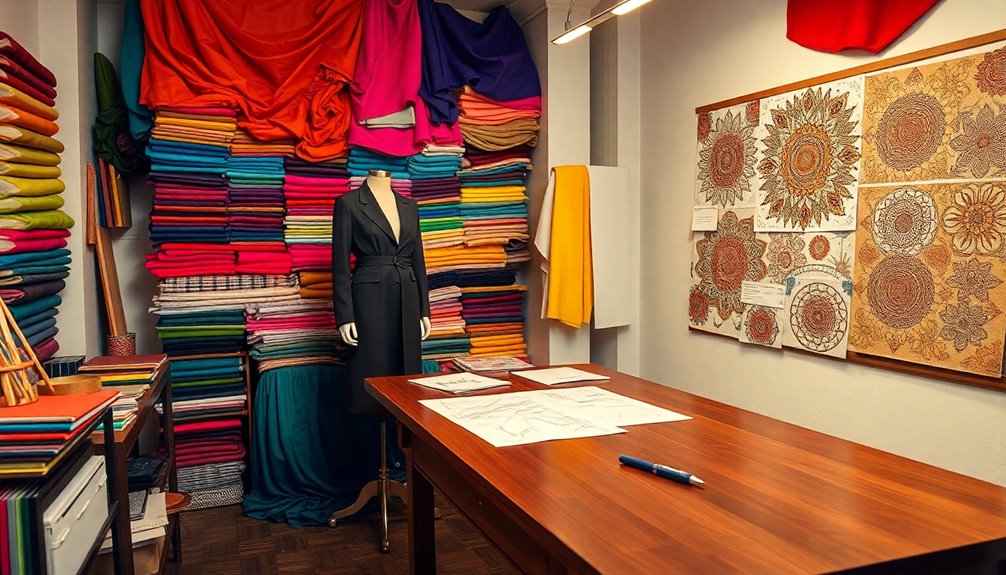
Attention to detail is the backbone of a Fashion Art Director's role, ensuring every visual element aligns perfectly with the brand's vision. You need to meticulously manage every aspect of imagery—set design, colors, styles, and lighting—to create cohesive visuals. This attention helps avoid mistakes in the final product and ensures flawless quality control.
As you develop concepts, a detail-oriented approach is crucial for executing the visual strategy that reflects the brand's DNA. Collaboration with stylists, photographers, and models requires you to focus on every little detail, ensuring consistency across the board. Your ability to showcase technical skills effectively enhances the overall quality of the visuals. Additionally, your understanding of high standards in visual quality ensures that each project meets industry benchmarks. A successful fashion art director also engages in holistic SEO practices to understand how visuals can impact online presence and brand awareness.
Your oversight extends into post-production, where retouching and color grading must meet high standards. Moreover, your keen eye for detail drives innovation, allowing you to brainstorm and execute unique campaigns effectively.
You'll also convey ideas through visuals, ensuring everything aligns with the brand's message. Managing timelines and resources efficiently depends on your meticulous planning, while client feedback should be incorporated thoroughly to meet expectations.
Ultimately, your organizational skills and adaptability in a fast-paced industry ensure that every project maintains a high standard of quality and creativity.
Navigating Industry Trends

As a Fashion Art Director, keeping up with industry trends is vital for staying relevant and innovative. You should regularly attend fashion shows to spot emerging trends and gauge the direction of the market.
Reading fashion publications and following industry reports will sharpen your understanding of where the market is headed. Engaging with designers, visiting stores, and talking to customers helps you assess public reactions to collections, giving you valuable insights.
Don't overlook your competitors; analyzing their sales, store numbers, and pricing strategies can inform your own collection planning.
Social media and digital platforms are goldmines for monitoring consumer preferences, so make sure to keep an eye on those channels. The rise of sustainable fashion has become a key topic in discussions around consumer choices and brand loyalty.
Adapting to sustainability and technological advances is crucial, too. Incorporating eco-friendly materials and practices, as well as collaborating with tech companies on innovative fabrics, will set your work apart.
Embracing inclusivity and diversity in your designs won't only resonate with a broader audience but also enhance your brand's relevance in a rapidly evolving fashion landscape. Additionally, understanding the potential for shifts in design direction can help you anticipate market changes and consumer demands.
Balancing these aspects will ensure you navigate trends effectively while maintaining a strong brand identity.
Educational and Experience Requirements

To break into the role of a Fashion Art Director, a solid educational background is crucial. Most employers prefer candidates with a bachelor's degree in fashion design, visual arts, or a related field. Relevant majors like fashion merchandising, fashion marketing, or art history can set you apart. Many art directors also hold advanced degrees in fine arts or business administration, enhancing their strategic vision.
Postsecondary training should include specialized courses in graphic design, photography, and fashion branding. Institutions like New York University, Parsons School of Design, and the Fashion Institute of Technology offer excellent programs that provide a strong foundation. Relevant studies in these areas equip aspiring art directors with essential knowledge for their future roles.
In addition to formal education, gaining three to five years of experience in a design department is essential. Supervisory roles or design positions help build the leadership skills necessary for this position.
Internships and freelance projects are excellent ways to develop your portfolio and gain practical experience. Networking within the industry and attending fashion events can also open doors.
The Impact on Brand Identity

Brand identity thrives on the creative vision of a Fashion Art Director, who plays a pivotal role in shaping how a brand is perceived in the marketplace. By translating brand identity into compelling narratives, you bridge the gap between clothing design and marketing communication. Your oversight of visual campaigns ensures alignment with the brand's core values, creating high-impact storytelling that expands brand assets and drives sales.
In your role, you're responsible for brainstorming innovative shoot ideas and assessing concepts that resonate with the brand's DNA. Leading the creative vision across various platforms, from editorial to e-commerce, you push the boundaries of fashion to attract consumers and maintain relevance. Effective brand communication significantly enhances the overall growth of the fashion industry, reinforcing the importance of your contributions.
Staying updated with fashion trends is crucial for your success, as is your ability to balance innovation with the brand's heritage. Your effective visual communication can significantly impact a brand's financial performance. When you align the brand's aesthetic with market trends, you capture the cultural zeitgeist, resonating with target audiences and ultimately driving revenue growth.
Frequently Asked Questions
What Software Tools Do Fashion Art Directors Typically Use?
As a fashion art director, you typically use software tools like Adobe Illustrator for creating vector graphics, illustrations, and logos.
CLO's intuitive interface helps you design garments in real-time, while Lectra Kaledo offers advanced textile design capabilities.
For pattern making, Telestia Creator ensures precision, and Tailornova lets you create custom-fitted designs quickly.
These tools streamline your workflow and enhance your creative process, making it easier to bring your vision to life.
How Do Fashion Art Directors Handle Tight Deadlines?
When you handle tight deadlines, you prioritize tasks based on urgency and importance, breaking larger projects into manageable parts.
You create a realistic schedule and utilize digital tools for organization.
Communication's key, so you collaborate efficiently with your team, delegating tasks to optimize resources.
Regularly reviewing your progress helps you adapt to changes, ensuring you stay on track while maintaining creativity and quality in your work.
Effective time management techniques keep procrastination at bay.
What Skills Are Essential for Successful Collaboration?
For successful collaboration, you need strong communication skills to articulate your vision clearly and listen actively to others.
Building trust is essential, so encourage open dialogue and value everyone's input.
Adaptability is key, as it helps you navigate differing opinions and changing circumstances.
Additionally, fostering a supportive environment motivates your team, ensuring everyone feels empowered to contribute creatively.
How Is Feedback Typically Provided to Team Members?
Feedback's typically provided through direct meetings and discussions, where you can openly share your thoughts.
Visual aids, like mood boards, help convey ideas clearly. Regular updates keep everyone aligned with project objectives.
Encouraging a culture of mutual respect ensures team members feel comfortable sharing their perspectives.
Constructive criticism is key to improving work quality, fostering creativity, and motivating the team to excel in their collective efforts.
What Are Common Career Paths for Fashion Art Directors?
As a fashion art director, you can follow several career paths.
You might start as a junior art director, gaining experience and collaborating with creative teams. After a couple of years, you could advance to a full-fledged art director, managing visual projects and enhancing your strategic thinking.
With continued growth, you might reach senior art director roles or even move into leadership positions, like creative director, where you mentor others and shape overall creative direction.
Conclusion
In conclusion, the role of a fashion art director blends creativity with strategic vision, shaping the brand’s identity while leading a team. By staying attuned to industry trends and maintaining a keen eye for detail, you can drive impactful campaigns. Your ability to cultivate a unique creative vision not only influences the design process but also resonates with audiences, ultimately elevating the brand. Embrace this dynamic role and watch your creative ideas come to life in the fashion world. Additionally, the fashion art director plays a pivotal role in shaping the fashion design department structure. By effectively managing and inspiring a team of designers, photographers, and stylists, the art director ensures that the brand’s creative vision is consistently upheld throughout all aspects of the design process. This collaborative approach fosters innovation and ensures that the brand remains at the forefront of the fashion industry.
